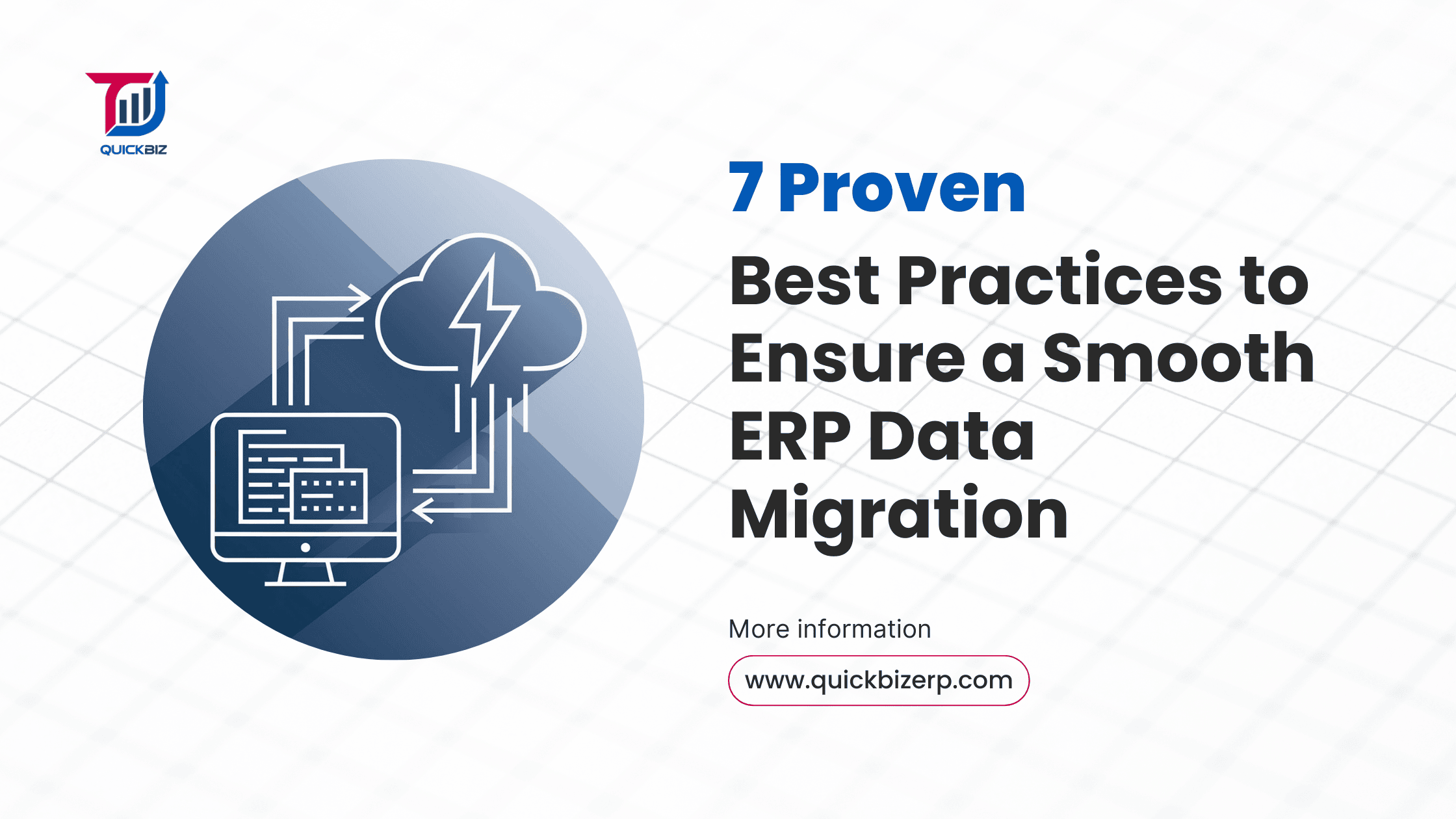7 Proven Best Practices to Ensure a Smooth ERP Data Migration

Introduction
In today’s fast-paced digital landscape, businesses are increasingly adopting ERP systems to streamline their operations and improve efficiency. A critical part of ERP implementation is data migration—the process of transferring essential business data from legacy systems to the new ERP platform.
Despite its importance, data migration is fraught with challenges such as data loss, delays, and integration issues. By following these seven proven best practices, organizations can mitigate risks and ensure a smooth ERP data migration, setting the stage for a successful digital transformation.
What is ERP Data Migration?
Definition and Purpose
ERP data migration involves moving data from existing systems to a new ERP solution. This step is vital for ensuring the new system functions seamlessly, using accurate and relevant data to drive business processes.
Key Stages of the Migration Process
- Planning: Setting goals and timelines.
- Data Extraction: Retrieving data from the legacy system.
- Data Transformation: Formatting and cleaning data to align with ERP requirements.
- Loading: Importing data into the ERP system.
- Validation: Ensuring data integrity and accuracy post-migration.
7 Proven Best Practices
1. Start with a Comprehensive Data Assessment
Before initiating migration, assess your existing data. Identify and remove redundant, outdated, or irrelevant information to improve accuracy and reduce system clutter.
- Why it matters: Poor-quality data leads to errors and inefficiencies in the ERP system.
2. Define Clear Objectives and a Migration Plan
Set measurable objectives and create a detailed roadmap outlining each phase of the migration process. Include timelines, roles, and contingencies to ensure smooth execution.
- Pro Tip: Align migration goals with broader business objectives for maximum ROI. Learn more about how to maximize your ERP ROI here.
3. Choose the Right Tools and Technologies
Select tools that align with your migration needs, such as data volume and complexity. Look for solutions offering automation, error-checking, and compatibility with your ERP system.
- Examples: Dell Boomi, Talend, and Informatica are popular data migration tools.
4. Cleanse and Standardize Data
Clean your data to remove duplicates, fill missing fields, and resolve inconsistencies. Standardize data formats to ensure compatibility with the ERP system.
- Benefits: Clean data ensures smooth integration and enhances decision-making accuracy.
5. Migration in Stages
Instead of migrating all data at once, conduct trial runs for smaller datasets. Test for accuracy and identify errors early to avoid large-scale issues during full migration.
- Tip: Use a sandbox environment to test without impacting live operations.
6. Ensure Cross-Departmental Collaboration
Involve all relevant departments to ensure data requirements are met across the organization. Regular communication and feedback loops enhance the migration process.
- Why it’s crucial: Migration affects multiple functions; collaboration ensures alignment.
7. Plan for Post-Migration Validation and Maintenance
Post-migration validation is essential to confirm data integrity and functionality. Establish monitoring processes to maintain data accuracy over time.
- Next steps: Schedule regular audits and address anomalies promptly.
Common Mistakes to Avoid in ERP Data Migration
- Failing to Involve Key Stakeholders: Excluding stakeholders leads to gaps in requirements and accountability.
- Overlooking Data Security and Compliance: Ensure sensitive data is protected and complies with regulatory standards.
- Skipping the Testing Phase: Neglecting tests can result in significant errors during live migration.
Conclusion
ERP data migration is a critical component of a successful ERP implementation. By adhering to these seven best practices—ranging from comprehensive planning to post-migration validation—businesses can navigate this complex process with confidence. Remember, investing time and effort in a structured approach will pay dividends in achieving seamless ERP functionality and long-term business growth. Embrace these strategies to ensure your ERP system becomes a cornerstone of your digital transformation journey. Learn more about how ERP systems are crucial for business success.

